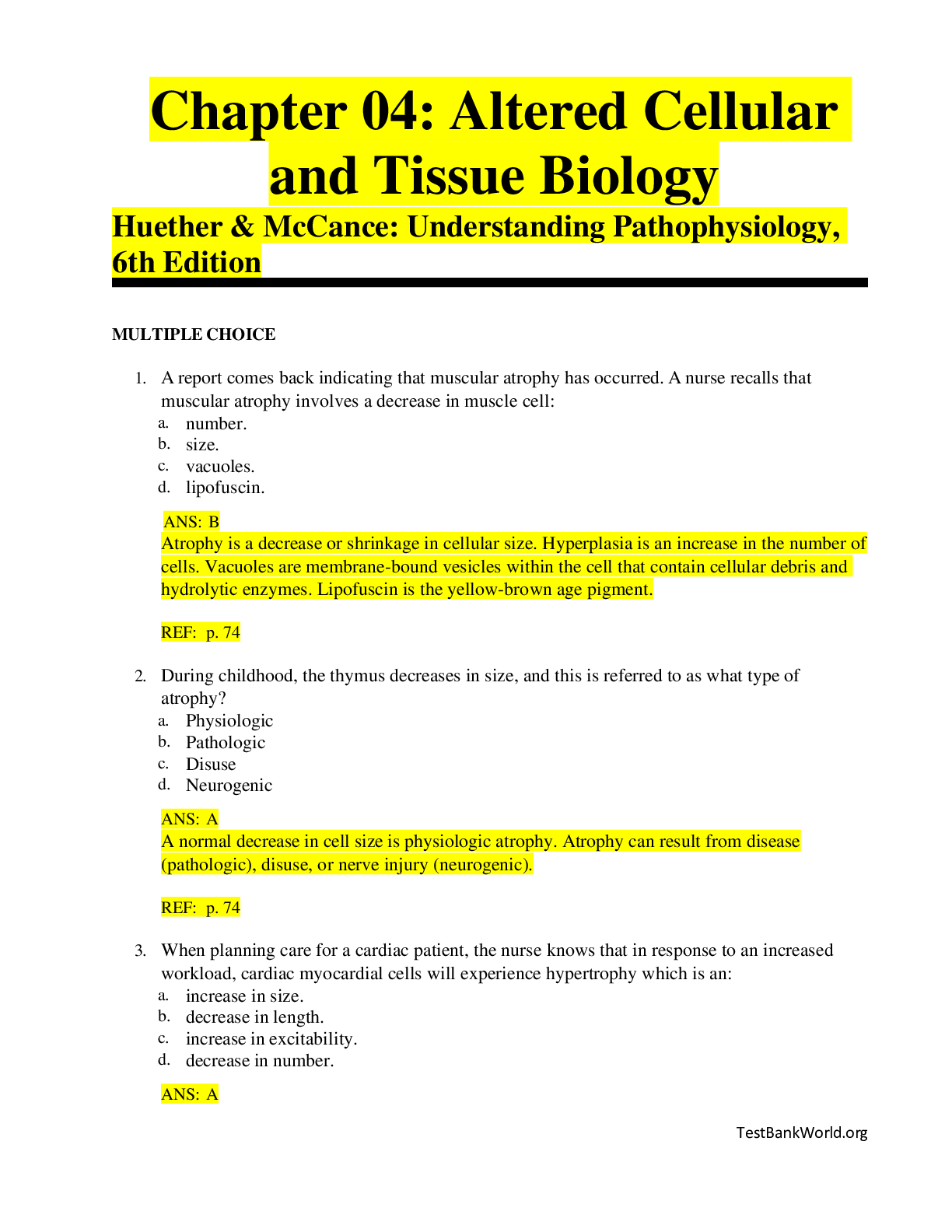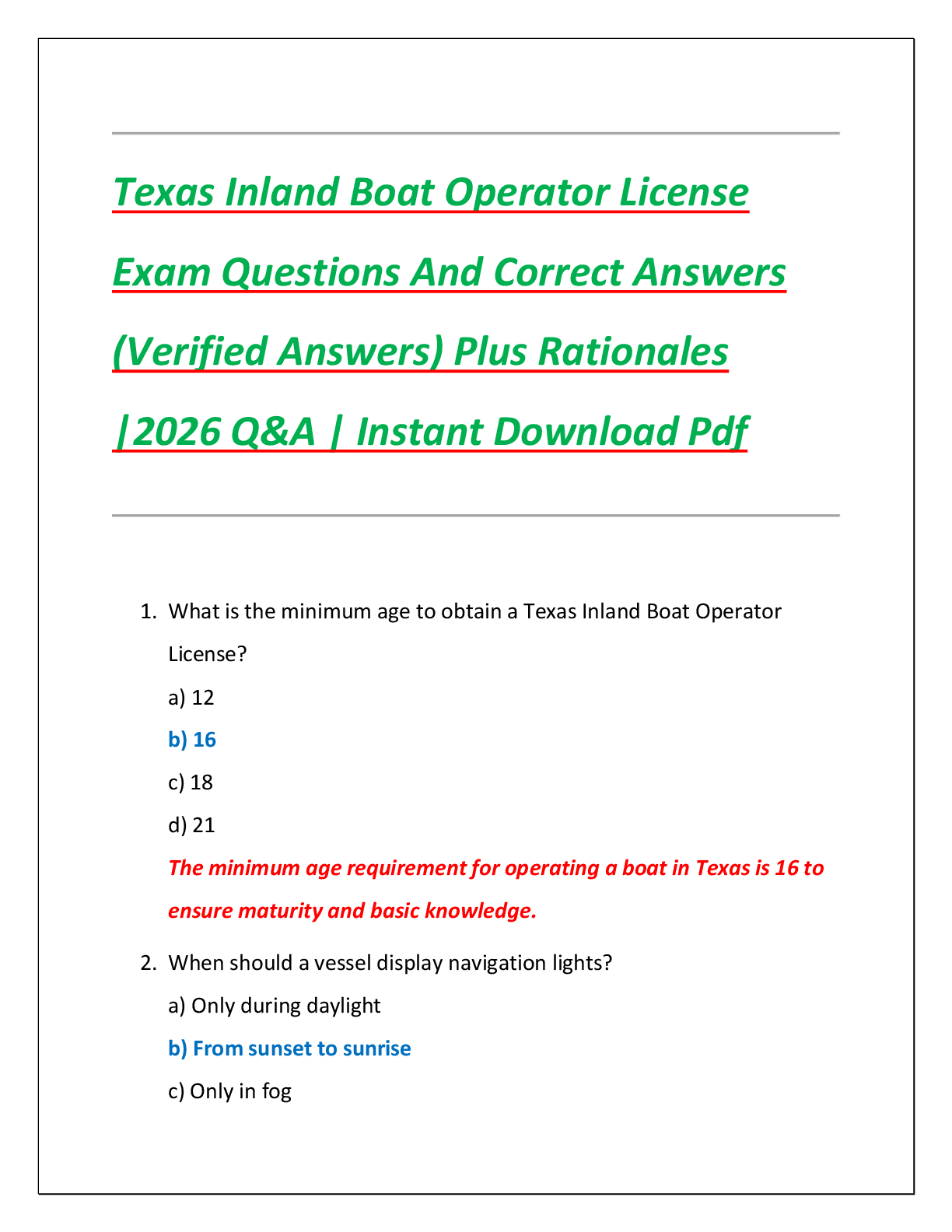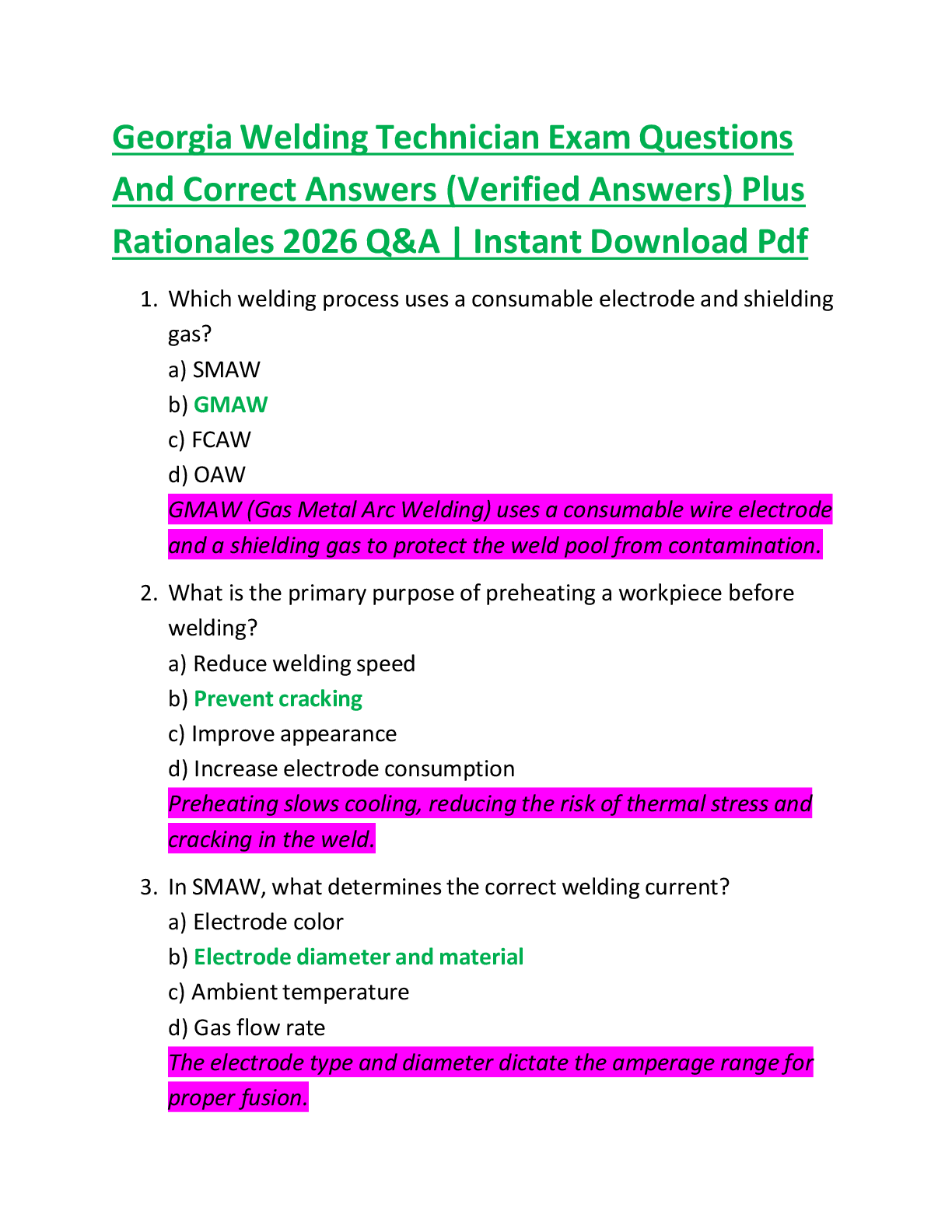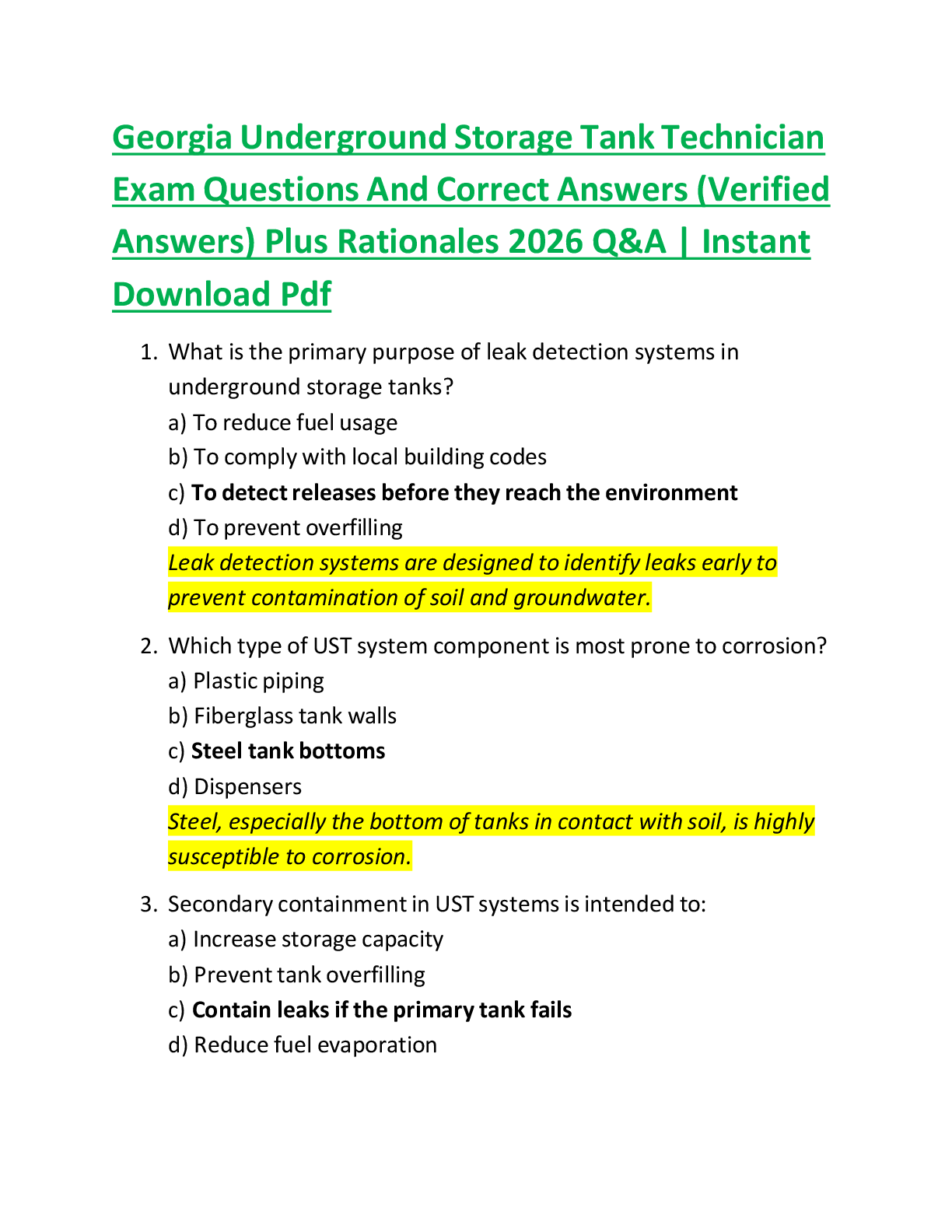Health Care > EXAMs > Chapter 04: Altered Cellular and Tissue Biology (All)
Chapter 04: Altered Cellular and Tissue Biology
Document Content and Description Below
MULTIPLE CHOICE 1. A report comes back indicating that muscular atrophy has occurred. A nurse recalls that muscular atrophy involves a decrease in muscle cell: a. number. b. size. c. vacuoles. d ... . lipofuscin. ANS: B Atrophy is a decrease or shrinkage in cellular size. Hyperplasia is an increase in the number of cells. Vacuoles are membrane-bound vesicles within the cell that contain cellular debris and hydrolytic enzymes. Lipofuscin is the yellow-brown age pigment. REF: p. 74 2. During childhood, the thymus decreases in size, and this is referred to as what type of atrophy? a. Physiologic b. Pathologic c. Disuse d. Neurogenic ANS: A A normal decrease in cell size is physiologic atrophy. Atrophy can result from disease (pathologic), disuse, or nerve injury (neurogenic). REF: p. 74 3. When planning care for a cardiac patient, the nurse knows that in response to an increased workload, cardiac myocardial cells will experience hypertrophy which is an: a. increase in size. b. decrease in length. c. increase in excitability. d. decrease in number. ANS: A TestBankWorld.org Hypertrophy is a compensatory increase in the size of cells in response to mechanical stimuli (also called mechanical load or stress, such as from stretching, repetitive, chronic, pressure, or volume overload) and consequently increases the size of the affected organ. The cells of the heart and kidneys are particularly prone to enlargement. A decrease in length is not associated with hypertrophy. A deficiency of electrolytes or minerals could lead to an increase in excitability; it is not due to increased workload or related to hypertrophy. A decrease in cell numbers is referred to as hypoplasia. TestBankWorld.org REF: p. 75 4. A 55-year-old male with a 30-year history of smoking is examined for respiratory disturbance. Examination of his airway (bronchial) reveals that stratified squamous epithelial cells have replaced the normal columnar ciliated cells. This type of cellular adaptation is called: a. anaplasia. b. hyperplasia. c. metaplasia. d. dysplasia. [Show More]
Last updated: 3 years ago
Preview 1 out of 14 pages

Buy this document to get the full access instantly
Instant Download Access after purchase
Buy NowInstant download
We Accept:

Reviews( 0 )
$10.00
Can't find what you want? Try our AI powered Search
Document information
Connected school, study & course
About the document
Uploaded On
Oct 22, 2022
Number of pages
14
Written in
All
Additional information
This document has been written for:
Uploaded
Oct 22, 2022
Downloads
0
Views
100

















